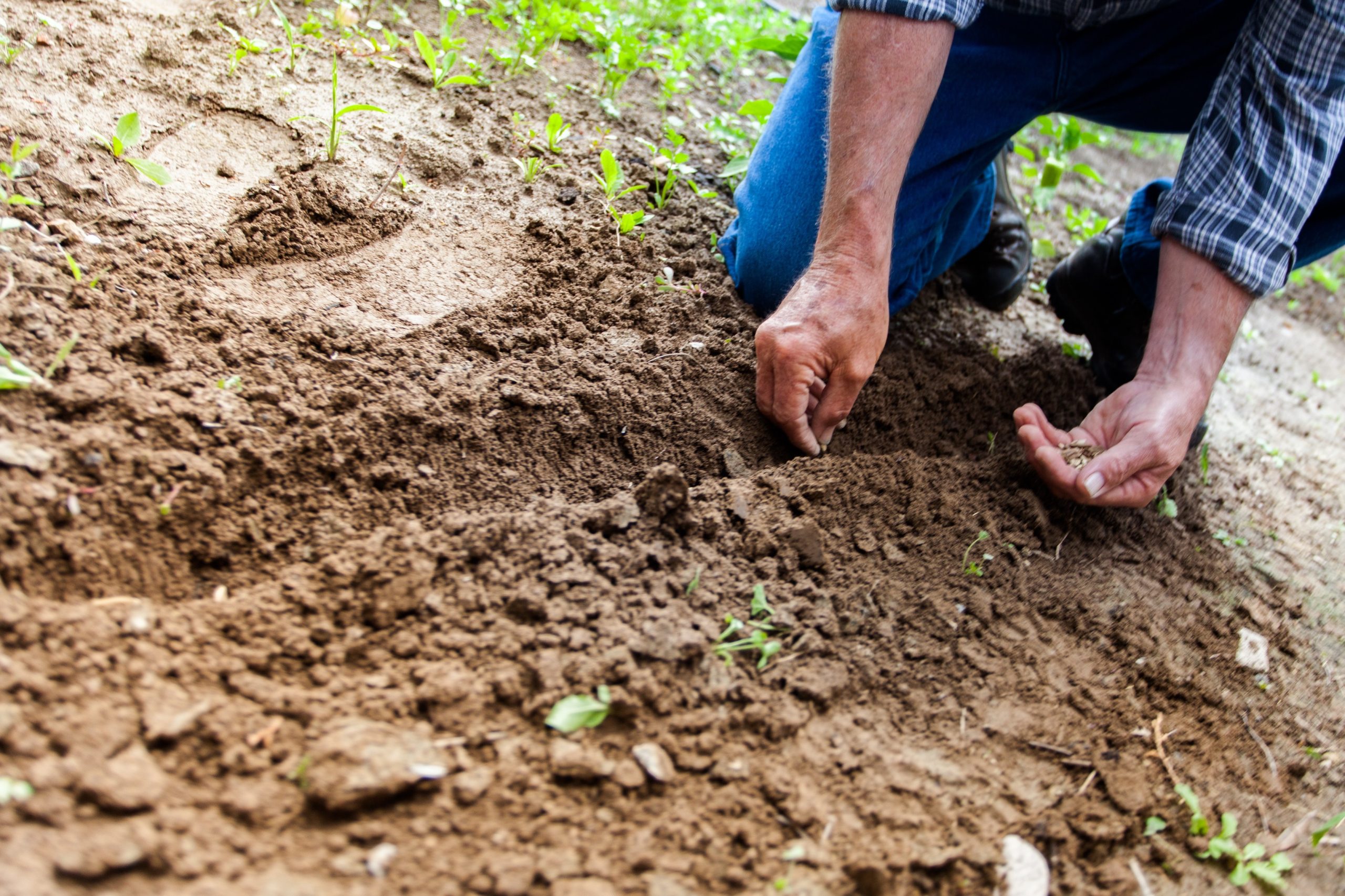We start to see a lot of gardening injuries as the days slowly lengthen towards spring. It’s not surprising that so many people rush out to tend their garden and allotment, but as with any physical activity, it’s important to keep in mind that injuries can happen if you’re not yet used to it.
While gardening brings so many benefits for body and mind, there are particular hazards with a sudden return to lots of bending, digging and lifting.
After lots of winter rain, the soil is often In this blog, our osteopath Steve McMullen from our Sidmouth clinic explains which are the most common gardening injuries he sees, and how to prevent them.
Lower back injuries when gardening
Our osteopaths see people with all sorts of injuries to the lower back, an area of complex musculoskeletal structures. One of the most common injuries gardeners experience is to the intervertebral disc. This is where the outer layer of the fibrocartilaginous structure between your vertebrae weakens, allowing the jelly-like substance within the disc to push out. It’s often caused by sudden movement, especially after bending forward for an extended period of time.
Your osteopath may use gentle traction, which releases pressure on the affected disc. Massaging any muscles that are in spasm may help, and he or she will advise on a gentle stretching and exercise routine to strengthen the area and surrounding muscles.
Knee pain when gardening
Gardener’s knee (prepatellar bursitis) is an injury caused by repetitive or long stretches of kneeling.
The prepatellar bursa is a fluid-filled sac found between the kneecap and the skin. When this sac is inflamed, it swells and causes pain around the front of the knee that worsens with activity or kneeling. The swelling is quite visible.
If you have acute gardener’s knee (that’s a new condition, or very painful), your osteopath will treat it differently and might advise rest and the use of ice to reduce swelling. AS the acute symptoms fade, he or she will use techniques to lessen the pain and prevent recurrence. Your osteopath will also check for any other cause of the condition, such as infection.
Wrist injuries when gardening
Gardeners’ wrists are vulnerable because of the repetition and particular postures involved in many activities, such as squeezing secateurs. Wrist pain may be caused by a number of different conditions, for example tendinitis, carpal tunnel syndrome or arthritis. IT may be a sharp pain or tug, or an ache and will probably be aggravated by lifting, twisting or gripping tools.
Your osteopath will assess the injury and devise a treatment depending on how acute your injury is. He or she will probably recommend gentle stretches, and adaptations to your gardening routine. Techniques such as manipulation and massage may be effective at reducing pain.
Prevent gardening injuries
You’d probably remember to do your warm-up stretches if you were preparing to go out running or playing a sport. Gardening is no different – your muscles need to be warmed up before you start. Try a few simple stretches for your back, hips and knee joints, and engage your whole body with a brisk walk around the block before you get stuck into the garden or allotment.
It’s important to change positions regularly, don’t get stuck in one position for too long, and alternate activities to avoid strain on any one area of your body. When kneeling, use a padded kneeler or cushion and distribute your weight through both legs evenly, again changing sides regularly.
Once you start digging and lifting, remember to bend with your knees rather than your back. Let your thigh muscles take the strain and make sure that your weight is well centred when reaching over to plant, or empty soil from your spade. A study by the Royal Horticultural Society found that digging with poor technique can double the load on joints, with the low back being especially vulnerable.
When it comes to sowing seeds or planting seedlings, you will be bending forward or kneeling a lot, and holding that position for an extended stretch of time. This will cause your hip flexor muscles to shorten and contract, so it’s important to move slowly out of this position as a sudden lengthening can cause a spasm. You might, unfortunately, be familiar with the sudden twinge in your back that signals a spasming of the psoas muscle.
You might not think it, but your head position is important. When gardening, you’ll be bending over with your head held forward a lot. This places extra burden on your neck and can lead to neck and shoulder pain. To help avoid this, make sure you take regular breaks and stretch out your neck by tucking in your chin towards your chest.
Don’t forget to warm down, either, again stretching your body out and perhaps take another short walk before retiring for a well-earned cup of tea.
Osteopathy for gardening injuries
Make an appointment with Steve McMullen today, if you are experiencing pain during or after gardening. Getting help early will mean you can get back to the garden soon, which as every gardener knows, is important at this time of year!


